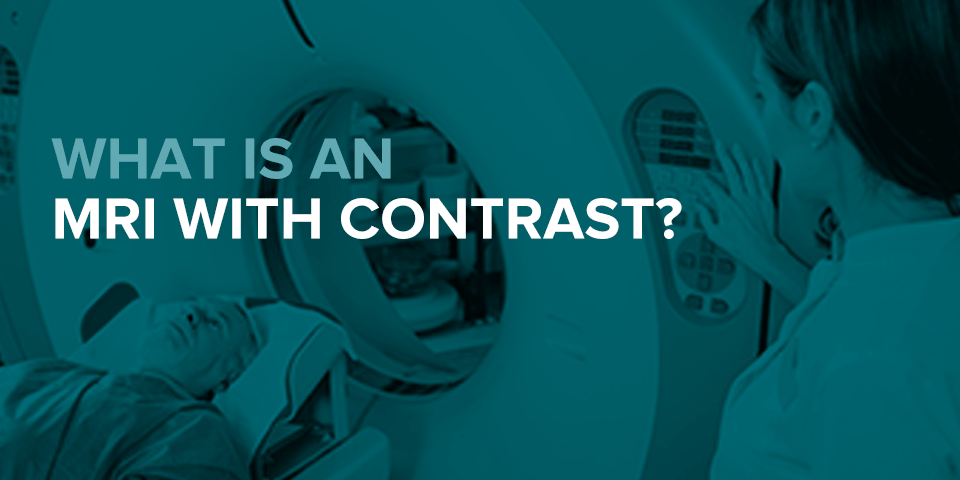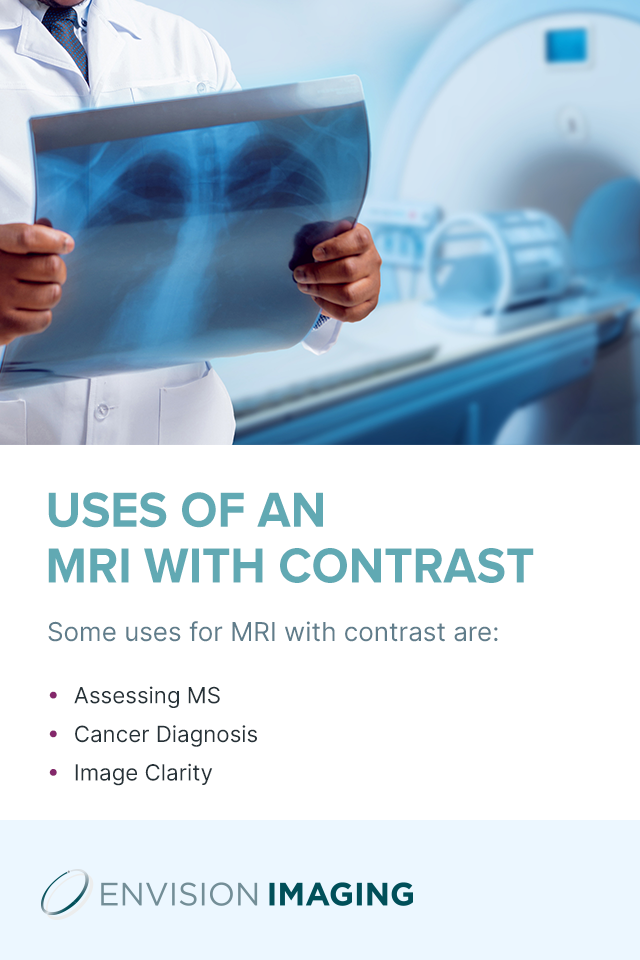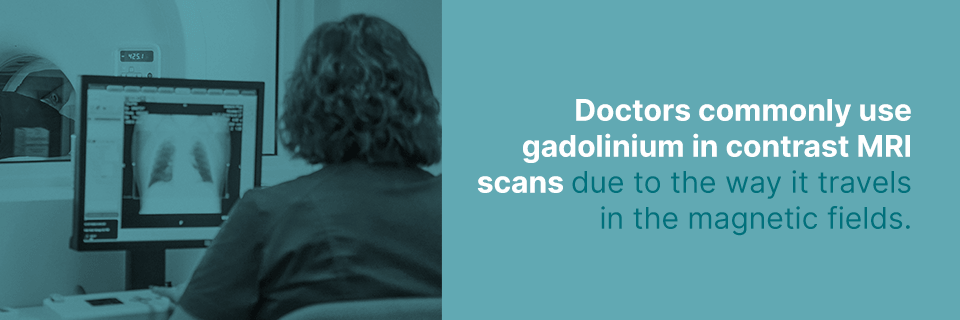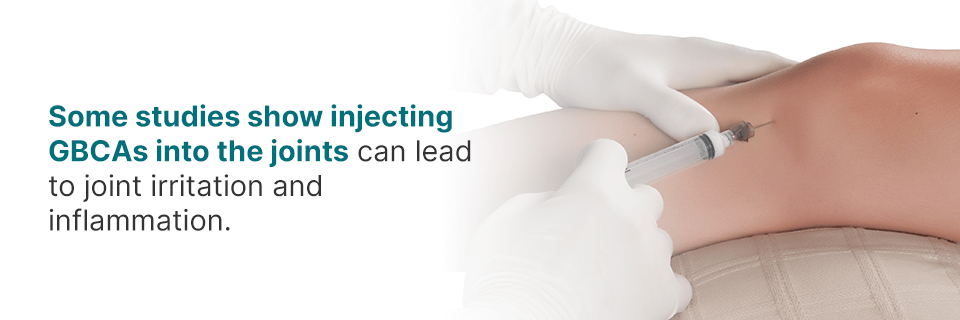What Is an MRI With Contrast?

With the advancements in medical imaging technology and a higher prevalence worldwide, you might have become more familiar with one type of imaging technology known as magnetic resonance imaging (MRI) ― and the value it offers to health care. You might be familiar with an MRI machine as a large, cylindrical piece of equipment generating a strong magnetic field around you. It creates highly detailed pictures of your body’s soft tissue to provide your doctor with substantial diagnostic and prognostic information.
But, you might not be aware of the crucial role contrast plays in an MRI. MRIs are unique to other imaging methods like CT scans and x-rays because they could involve the use of gadolinium-based contrast agents (GBCAs), which is a type of MRI contrast dye, to assist in adding clarity and decipherability to your MRI image.
If you need an MRI with and without contrast, and are looking to book your appointment at Envision Imaging, below you can learn more about this technology, its uses and benefits and more.
Jump to Sections:
- Who Needs an MRI With Contrast?
- Uses of an MRI With Contrast
- Advantages of Contrast in MRIs
- What’s Involved With Contrast Injection?
- Potential Safety Concerns of MRI Contrast
- What the FDA Has to Say
- Tips for Preparing for an MRI With Contrast
- Schedule Your Appointment for Your MRI Contrast Scan
Who Needs an MRI With Contrast?
An MRI scan with contrast only occurs when your doctor orders and approves it. During the procedure, they’ll inject the gadolinium-based dye into your arm intravenously. The contrast medium enhances the image quality and allows the radiologist more accuracy and confidence in their diagnosis.
The contrast medium dye doesn’t permanently discolor your internal organs. Instead, it temporarily changes how imaging modalities view and interact with your body. After the completion of your imaging exam, either your body absorbs the contrast material, or you eliminate it through your urine.
Not every MRI requires using a contrast agent. MRIs with and without contrast are both effective, and your doctor will determine which scan you need based on your present condition and your medical and health history. But, if the doctor requires a highly detailed image to assess a specific problem area within your body, they’ll typically order the contrast agent.
When the radiologist adds the contrast to your veins, it enhances their visibility of:
- Tumors
- Inflammation
- Certain organs’ blood supply
- Blood vessels
While a contrast MRI provides the doctor with valuable information, they typically won’t order an MRI with contrast unless they think it’s necessary. For instance, in most cases, work-related injuries, sports injuries and back pain don’t usually call for intravenous contrast exams.
Schedule an MRI at Envision Imaging
Uses of an MRI With Contrast
Some uses for MRI with contrast are:
1. Assessing MS
Contrast MRIs are a great way to track the progression of multiple sclerosis. MRI scans have transformed how radiologists diagnose MS, and are now the primary method doctors use to diagnose the condition, to the exclusion of other techniques such as CT scans, since in MRI scans, the lesions appear quite distinctly.
However, contrast MRIs aren’t necessary for an MS diagnosis. Doctors can often spot lesions reasonably easily anyway. Regardless, an MRI with contrast detects new lesions as they form, helping doctors learn how fast the condition is progressing. They also help the doctor evaluate the type of MS a patient has, which can be:
- Primary progressive MS
- Secondary progressive MS
- Relapsing/remitting MS
2. Cancer Diagnosis
If a radiologist uses MRI dye during your MRI exam to make parts of your soft tissue look more detailed, they can spot tumors better as they start growing. If you have a tumor that’s just beginning to grow, it can be harder for the radiologist to spot.
3. Image Clarity
The MRI scan with contrast works by highlighting specific parts of your soft tissue, helping the radiologist come up with a diagnosis of your condition. In particular, tumor growths or other severe developments are simpler for the radiologist to identify when using contrast with the MRI scan.
Since a standard MRI scan can’t identify moving fluid such as blood in your arteries, the dye helps make your bloodstream stand out. Your arteries and veins appear as “flow voids” without the dye and show up on your scan as plain black.
Advantages of Contrast in MRIs
There are several benefits of MRI contrast, including:
- If the radiologist uses contrast during your MRI, the doctor generally won’t require any additional scans because of the initial MRI’s enhanced nature.
- A contrast MRI is superior at measuring and evaluating tumors. Adding contrast makes it possible for the radiologist to detect even the smallest tumor and provides information about the precise location of the tumor.
- The radiologist can interpret an MRI contrast scan better, since they have more clarity and generate better-quality images.
Shades of gray that vary from white to black make up an MRI image. When the radiologist injects gadolinium dye into your bloodstream, it illuminates specific tissues and makes them easier to detect and evaluate. For instance, hard bone and air don’t give off an MRI signal when imaging the body, so these areas look nearly black on the scan. However, spinal fluid, bone marrow, soft tissues and blood will vary from light to dark, depending on how much water and fat are present in your tissues, as well as the machine’s specific settings.
The doctor can then use your completed scan to compare the distributions and size of the dark and light areas to evaluate abnormal and normal tissues. When they add contrast to your bloodstream during your scan, the tissues they’re targeting will appear like they’re glowing bright white, which makes them straightforward to detect and evaluate.
MRI contrast is invaluable when imaging tumors in major body organs like your brain or in your central nervous system. MRI dye can help doctors detect the tumors, identify if they’re malignant or benign and determine the growth stage they are in.
What’s Involved With Contrast Injection?
Most MRI scan contrast agents contain a metal called gadolinium. Doctors commonly use gadolinium in contrast MRI scans due to the way it travels in the magnetic fields.
The first GBCAs received FDA approval in 1998. Since then, doctors have been using them to evaluate over 300 million patients all over the world. The contrast agents help doctors identify problem areas on MRIs. Doctors perform MRIs in the U.S. using contrast about 70% of the time. If you’ve ever had an MRI scan with contrast, you’ve likely had exposure to gadolinium.
To begin the scan, the technologist will place a tourniquet around your arm and then use a small needle to inject the contrast material into your vein. They may also use an automated injector to administer the contrast medium. Next, they’ll remove the needle and place you into the MRI machine to begin your scan.
The GBCAs attach to other chemicals to keep them from being harmful. Severe reactions to GBCAs are rare, and the information a contrast MRI scan can provide can be lifesaving.
Potential Safety Concerns & Health Risks of MRI Contrast
Having an MRI with contrast may lead to some side effects and safety concerns, including those below.
Kidney Issues
If you have healthy kidneys, you’ll excrete as much as 98% of the contrast medium before it breaks down. However, if you’re having problems with your kidneys and they’re not functioning properly, the contrast could break down before your body has the chance to excrete it. Therefore, you’ll have unbound gadolinium persisting in your body.
If this occurs, it could result in a complication known as nephrogenic systemic fibrosis (NSF). This condition thickens your skin and your connective tissues throughout your body. While NSF is rare, it can be a potentially debilitating complication that results from giving patients with poor kidney function GBCAs. Because of this, before receiving contrast for an MRI exam, doctors routinely screen patients for kidney function.
Although researchers haven’t established a causal link, current U.S. recommendations indicate dialysis patients should only receive GBCAs when necessary. Further, patients should receive dialysis as soon as possible following their MRI with contrast scan to promptly remove the agent from their body.
Side Effects
Most individuals don’t feel anything after they receive a contrast injection. However, a small number of individuals will experience adverse effects, ranging from mild to severe. The most common side effects are:
- Hives
- Skin rash
- Pain at the injection site
- Dizziness or warmth
- Nausea and vomiting
It’s rare to experience allergic reactions, but some individuals report a mild rash and itching. Though it’s unusual, the contrast dye can cause an anaphylactic allergic reaction that requires some people to seek emergency medical attention. Doctors minimize these rare complications by providing appropriate allergy risk factor and kidney function screening.
Joint Irritation and Inflammation
Some studies show injecting GBCAs into the joints can lead to joint irritation and inflammation. It’s not clear, however, that the agents are the actual culprit, and the reason individuals experience joint inflammation following these injections could be due to the volume of substances and fluid injected combined with gadolinium.
Doctors have been reluctant to link GBCAs directly to these maladies, since there’s little clinical proof showing a direct correlation. Also, symptoms can vary significantly between individuals reporting issues. Doctors have been using GBCAs in hundreds of thousands of individuals over the past two decades, and the clinical proof shows it’s safe in most people.
What the FDA Has to Say
The FDA agrees there needs to be more research and there’s not enough proof to impose a regulatory GBCA clampdown. In a safety announcement, the FDA acknowledged your brain could retain gadolinium deposits. However, there’s no evidence of it being harmful, and the FDA has said restricting the use of the contrast is “not warranted at this time.” While you might have a few of these deposits floating around, they don’t seem to be too harmful.
Until relatively recently, researchers didn’t widely know gadolinium accumulates and the tissues retain it, particularly the brain. Health professionals previously believed the body excreted the agent entirely. And, while there are a couple of large-scale studies in progress, it will take time to collect all the necessary information to determine gadolinium retention’s long-term effects.
If you have concerns about receiving MRI dye, don’t be afraid to let your doctor and radiologist know, too, as they have the experience and training to address these concerns. The decision to provide a contrast is typically condition- and patient-specific. However, it’s always open for discussion.
If you have problems with your kidneys, the doctor will often decrease the dose or perform a different test. Your doctor can also pre-treat for allergic reactions or select a different type of contrast agent. In some cases, they may perform the scan without contrast to reduce the risks. In all cases, they’ll use the smallest contrast amount possible.
Tips for Preparing for an MRI With Contrast
Some tips and information to help you prepare for your MRI scan include the following.
- You can eat normally and continue taking your medicines before your MRI contrast scan, unless your doctor says otherwise. Make sure you consult with the doctor before you make any changes to prescribed medicines or your diet.
- You should arrive at your appointment about a half-hour early so you can complete the screening form, where you’ll write down any health conditions that could interfere with your MRI scan exam.
- Your technologist will interview you to ensure you understand what’s on the screening form.
- Your technologist will let you know if any medical conditions could interfere with your MRI scan, and whether they need to modify the exam for your circumstances. Since the MRI uses a strong magnetic field, specific conditions could keep you from being able to have an MRI scan.
- You need to remove any metallic items like metal jewelry, hairpins, watches and other things. You’ll need to also remove credit cards with magnetic strips, shoes, belt buckles, coins, keys, electronic devices and hearing aids.
- You will need to relax and remain still during your MRI scan. Let the radiologist know if you have any fears like claustrophobia and side effects.
- You should know what happens after your MRI contrast scan, which includes:
- The radiologist will remove your IV before you go home if you received a dye injection.
- If you begin experiencing symptoms like hives, a rash or shortness of breath while you’re still at the imaging center, let the radiologist know immediately. Or, if you’ve left the imaging center, go to the nearest hospital.
- You will need to have someone drive you home if you received sedation. If you underwent sedation, you’ll stay at the facility until you’re awake and alert.
Schedule Your Appointment for Your MRI Contrast Scan With Envision Imaging or Colorado Springs Imaging
Our centers focus exclusively on improving your health. We provide outstanding hospitality and expertise and treat our patients with the respect they deserve, with a commitment to friendly, timely and helpful care.
We’ll make every effort to ensure your experience at any of our imaging centers is warm and pleasant. We maintain only the latest, most innovative imaging technology, so your results are always reliable and accurate.
The scheduling and timing of your MRI with contrast scan appointment will be as convenient as possible. We’re ready to serve you. You’ll find Envision Imaging centers in a variety of locations. To schedule your MRI scan with contrast appointment, choose a center near you.
Schedule an MRI with Envision Imaging or CSI
Sources:
- https://www.fda.gov/drugs/postmarket-drug-safety-information-patients-and-providers/information-gadolinium-based-contrast-agents
- https://www.ncbi.nlm.nih.gov/pmc/articles/PMC4735235/
- https://www.ncbi.nlm.nih.gov/pmc/articles/PMC6158336/
- https://www.verywellhealth.com/safety-of-using-contrast-in-mri-scans-4154264
- https://radiology.ucsf.edu/patient-care/prepare/mri
- https://www.itnonline.com/article/debate-over-gadolinium-mri-contrast-toxicity
- https://pubs.rsna.org/doi/10.1148/radiol.2017172224?url_ver=Z39.88-2003&rfr_id=ori%3Arid%3Acrossref.org&rfr_dat=cr_pub%3Dpubmed&
- https://www.ibji.com/what-is-an-mri-with-contrast/
- https://rarediseases.org/rare-diseases/nephrogenic-systemic-fibrosis/
- https://insights.gehealthcare.com/medical-imaging/what-is-mri-contrast-and-is-it-safe/
- https://www.ibji.com/what-is-an-mri-with-contrast/
- https://www.self.com/story/how-much-do-you-need-to-worry-about-mri-contrast
- https://insights.gehealthcare.com/medical-imaging/what-is-mri-contrast-and-is-it-safe/ https://medshadow.org/mri-gadolinium-contrast-agent/
- https://www.self.com/story/how-much-do-you-need-to-worry-about-mri-contrast
- https://www.health.harvard.edu/newsletter_article/are-mri-contrast-agents-harmful
- https://www.envrad.com/services/mri-scans/
- https://www.envrad.com/difference-between-x-ray-ct-scan-and-mri/
- https://www.envrad.com/what-to-expect-when-getting-an-mri/
- https://www.radiologyinfo.org/en/info.cfm?pg=safety-mr
- https://www.envrad.com/about-us/why-choose-us/
- https://www.envrad.com/locations/






